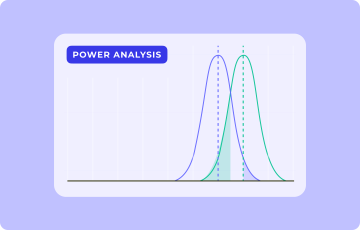How will data and conversion results be impacted by GA4?
This interview is part of Kameleoon's Expert FAQs series, where we interview leaders in data-driven CX optimization and experimentation. Deborah O'Malley is a top-10 digital marketing influencer, CEO of Convert Experts, and founded the go-to A/B test case study site, GuessTheTest.
What impact will 3rd party cookie bans such as ITP have on A/B testing?
The abolishment of 3rd party cookies, and likely 1st party cookies too—through Apple’s ITP—will impact experimenters' ability to track and report conversions accurately.
I anticipate three outcomes:
Fragmented data collection
Data collection and measurement will likely become more fragmented.
As 1st and 3rd party cookies phase out, data will be accessible only from users who consent to a site’s cookie policies, data collection terms, or login.
Since fewer users are likely to accept and consent to these privacy policies, data profiles will become more anonymous and less complete.
Ultimately, there will be bigger gaps in the data. These gaps will likely grow larger as privacy laws evolve and become more stringent.
Modeled user behavior
Currently, the digital marketing realm is moving towards more of an event-style tracking model, similar to Google Analytics 4 (GA4) data collection reports.
This movement means we’ll have more algorithms pointing to modeled user behavior rather than actual individual user data. And, we’ll likely rely more on data modeled through statistical calculations, methodologies, and technologies.
Essentially, we’ll move from an individual data collection approach to an aggregated, non-user-segmented overview.
This approach will work if we compile enough data points and invest in developing robust predictive analytics data collection and measurement infrastructure.
Less trackable user data
As privacy policies ratchet down, tracking user behavior will get far more challenging.
An anonymous user browsing experience with untrackable data will become the norm. Private, secure browsers, like Brave, will likely become the mainstay. Meaning, yet again, less data and metrics will be available to experimenters.
How can I ensure experiences driven by machine learning are still effective in a cookieless world?
As we move towards a cookieless world, conversions are likely going to be based on broader machine-driven learning algorithms that:
- Model users
- Predict and analyze expected behavior
- Anticipate reactions and outcomes
Data collection will likely go from individual attributions to aggregated assumptions based on broad groups of bucketed users. This is a fancy way of saying there will probably be bigger holes in our data sets.
Consumers are increasingly protective over their personal data. Given this, how can I collect first-party data without putting off users?
The answer seems to be in server-side tag management.
With server-side tracking, data is sent to a company’s privately-owned server infrastructure. In addition to removing the need to rely on cookies, server-side tag management can reduce the gap between conversion events and actual user behavior.
Server-side tagging is also more efficient because less code is loaded on the client-side. So, A/B tests can run more quickly without lag or flicker.
Given these benefits, server-side tracking seems a viable way to accurately collect and capture user data. At least for now.
What should I do with my existing Google Analytics data to prepare to switch over to GA4?
GA4 opens up a world of possibilities regarding understanding a customer journey and steps in the user funnel. To best prepare for the transition from Google’s Universal Analytics (UA) to GA4, there are three specific steps I recommend (you can find out more here).
Start adopting GA4 now
As most experimenters know, UA is set to sunset on July 1, 2023 (although for 360 customers, this timing has been delayed to 2024).
Because GA4 uses a different data tracking setup, it has a bit of a learning curve. If you start learning GA4 now, you’ll be well ahead when you’re forced to transition to it.
Work with your development team
GA4 has a lot of nuances that are powerful but not necessarily easy to grasp. If you have the luxury of working with a data analyst or development team, tap their expertise to ensure you take advantage of all the new tracking and data-capturing capabilities within GA4.
Look at broader trends and patterns
GA4 is built for a cookieless world. A place of invisible data where conversions will still happen, but experimenters won’t be able to track every step along the way. As a result, experimenters will need to rely on trends and patterns to assess and forecast how large, representative samples will behave.
When communicating data with teams, stakeholders, and clients, it will be the overarching trends that will be most important to decipher and report.
We heard you run a popular homemade fudge business in Ottawa, Canada. How has your CRO career impacted how you run your business?
Yes, I live in Ottawa, Canada, the nation’s capital, and sell delicious homemade fudge to customers worldwide, primarily online through Etsy.
Being in the world of CRO, and running my own chocolate business, has three parallel overlaps:
Branding, presentation, and copy
In creating my online store, I’ve had the opportunity to apply theory into practice to effectively brand the product, present it to look most appealing, and create compelling copy that pushes prospects to buy.
Without fudging the numbers, I can honestly say I’ve spent dozens upon dozens of hours editing photos and attempting to craft copy with winning wording that converts.
Pricing perception
Pricing is fundamental to any business's success. The price tag and how you display your product prices can make or break sales.
I’ve devoted a lot of time learning and researching pricing psychology and have synthesized many of my findings in this jam-packed 79-page eBook on pricing psychology.
I apply many of the product pricing principles to my Etsy store. For example, all store products end with the charm digit “9” because $19.99 looks much more desirable than $20.00 – even though the difference is just one cent.
Deals and promos
Everyone loves a good deal! Wanting to prompt sales, I’ve loosely “tested” the reception to special deals and promos, including a “Fudge of the Month” club. Club members get a box of decadently delicious homemade fudge delivered right to their doorstep every month. The gourmet fudge flavor is a surprise and changes each month.
Customers love being part of the club and look forward to their fudge delivery. This delicious deal helps create word-of-mouth interest, a great way to generate social proof and conversions!



